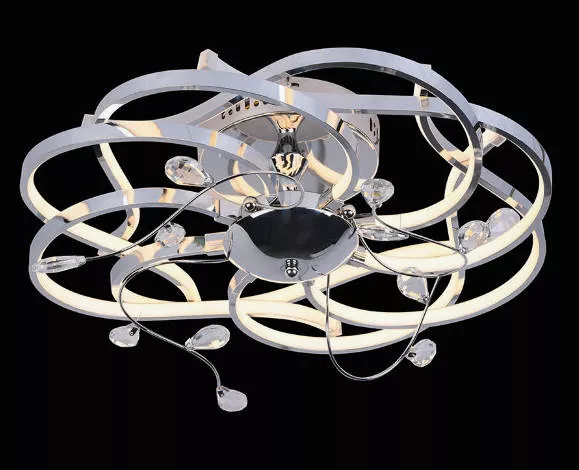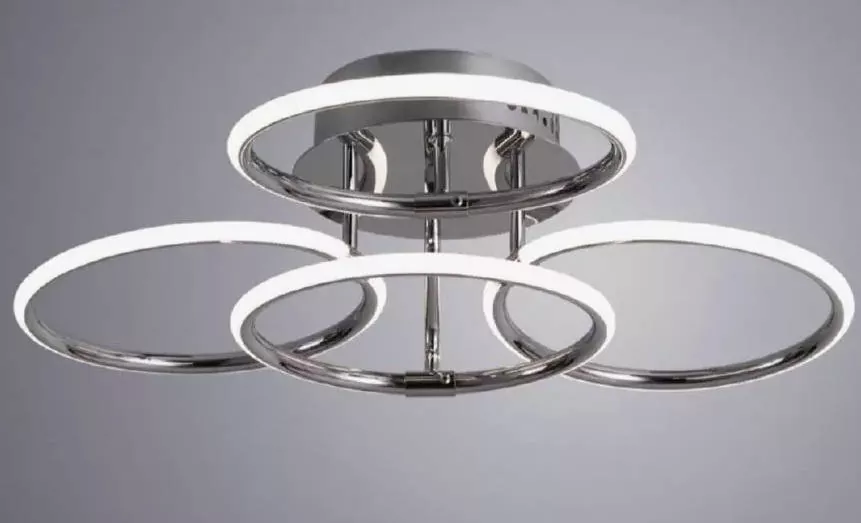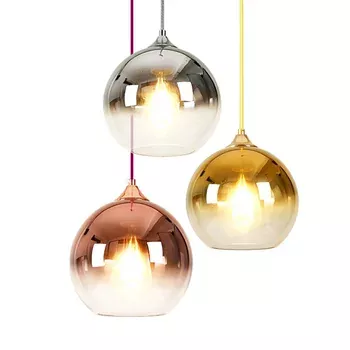LED chandeliers are fixtures for chandeliers that use Light Emitting Diode technology (LED) as their source of light.

LEDs emit luminescence when a current of electricity is passed through them.
LED chandeliers offer a variety of advantages over other sources of light, such as fluorescent and incandescent bulbs.
1.Energy Efficiency:
LED chandeliers are a green lighting solution. They consume significantly less power than other lighting sources and convert a greater proportion of the energy they consume into visible light, which results in lower costs and less consumption.
2.Long Lifespan:
LED chandeliers last for thousands more hours than conventional bulbs. Costs for maintenance and replacements are required to upgrade or replace the bulbs.
3.Durability:
LEDs are devices that have solid state technology which makes them much more resistant to vibrations and shocks. They are also suitable for outdoor and indoor applications.
4.Compact Size:
LED chandeliers are lighter and smaller than traditional lighting, which results in more modern, sleek styles.
5.Impulse Lighting:
LED chandeliers provide instant illumination without the requirement to warm up before they can reach their maximum brightness.
6.Color Options:
LEDs can provide a range of lighting effects that can be adapted to different preferences and moods like cold white, warm white, daylight, and even color-changing options. They can be modified to produce lighting effects for certain events or circumstances.
7.Dimmability:
Dimmable LED chandeliers let customers to create the ideal ambience for any space.
In general, led chandelier lights provide energy efficiency,long life span, the ability to withstand and durability which makes them a preferred option for lighting residential and commercial spaces, such as dining rooms, living rooms foyers, hallways, and so on.
What is the distinction between traditional and LED chandeliers?
The primary distinction between an LED Chandelier and its conventional counterpart is the lighting technology. Here are a few examples:
1.Lighting Technology:
LED ChandeliersThese lighting fixtures use Light Emitting Diode technology to reflect their light. LEDs are semiconductor devices which emit light when an electrical charge is passed through.
Traditional chandeliers:Conventional Chandeliers often use incandescent tubes, halogen or fluorescent as their lighting sources.
2.Energy Efficiency:
LED Chandelier:

Energy LED chandeliers consume less energy than conventional counterparts and convert a greater amount of energy into light, which helps lower costs for electricity.
Traditional Chandelier:
Traditional chandeliers are not as efficient than LED chandeliers . Halogen and incandescent bulbs use energy through heat, not light. This results in increased consumption of energy and use.
3.Length:
Chandeliers that have LED bulbs are more durable:
LED chandeliers can last for thousands of hours without having to change bulbs or change them. This decreases the frequency at which bulbs need to be replaced and also saves you money.
Traditional Chandeliers
Halogen and incandescent bulbs last between 1,000 and 2,000 hours, and traditional chandeliers last for up to 4,000 hours.
Long-term durability of LED Chandeliers
LEDs are a device made of solid state that is less susceptible to vibrations, shocks, and environmental influences than conventional bulbs.
Traditional Chandelier Traditional chandeliers are more prone to shocks and vibrations.
Style and Design:
Modern and sleek spaces
The small size of LED lights makes for modern, sleek designs.
They are more customizable than ever before in terms of the color temperature, dimming, and other options.
Traditional Chandelier:
Traditional chandeliers come in a range of designs, styles and sizes. They vary from elaborate and traditional to classic pieces with intricate details and ornamental elements.
Traditional chandeliers and LEDs have the same purpose – providing illumination and visual interest, while adding aesthetic appeal. But, their selection is usually based on factors like durability, energy efficiency and budgetary constraints.

